6 Ways Families Can Encourage Desired Behavior at Home
October 11, 2022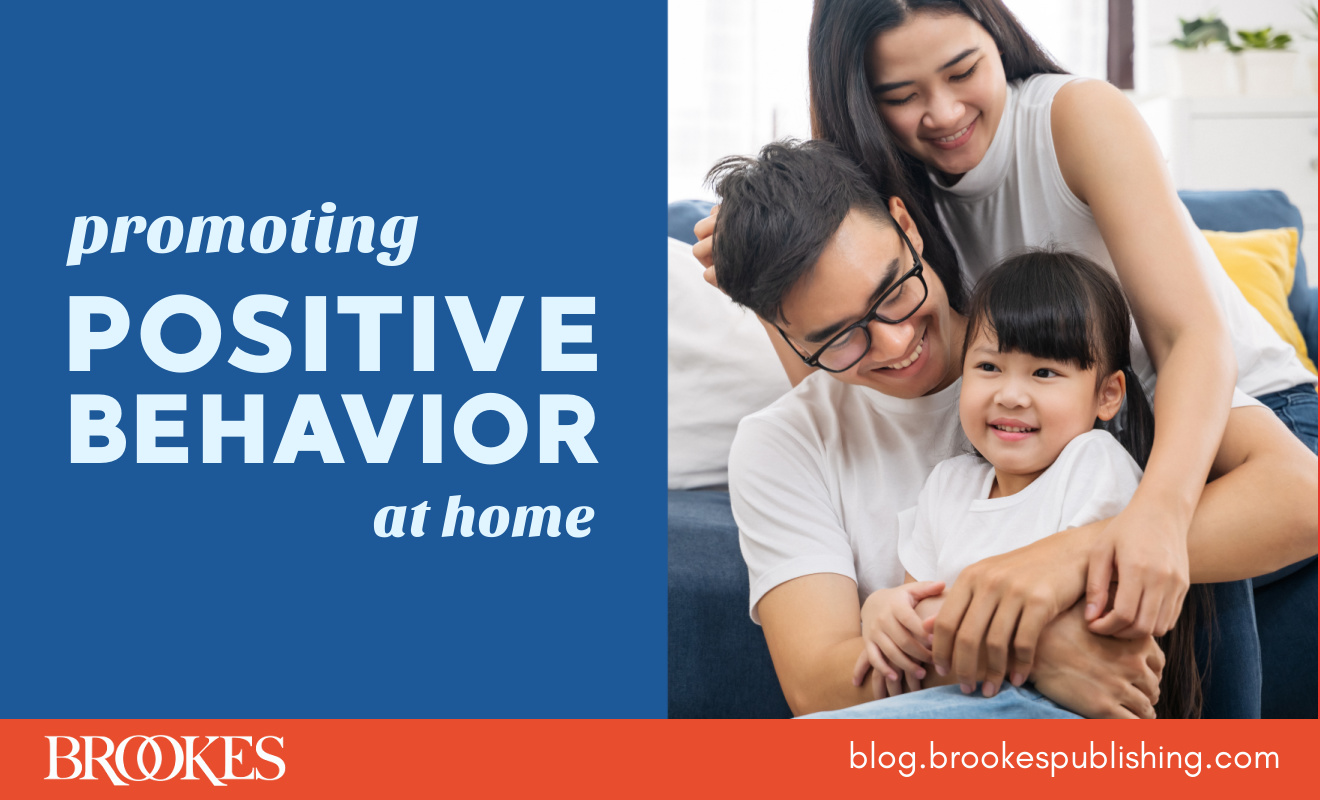
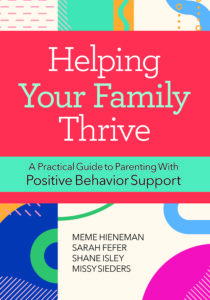 Great for sharing with families, today’s post is about a topic near and dear to just about every parent’s heart: increasing desired behaviors at home. These six suggestions, excerpted and adapted from the book Helping Your Family Thrive, will help families encourage positive behaviors through positive outcomes—good things that reinforce the behaviors parents want to see more of.
Great for sharing with families, today’s post is about a topic near and dear to just about every parent’s heart: increasing desired behaviors at home. These six suggestions, excerpted and adapted from the book Helping Your Family Thrive, will help families encourage positive behaviors through positive outcomes—good things that reinforce the behaviors parents want to see more of.
Give specific praise

Social praise, or simply acknowledging desirable behavior, is easy to deliver and often has a powerful impact on family members’ behavior—even more so when praise has been previously paired with highly preferred activities, events, or items. For example, you might say, “The kitchen looks spotless. Thank you for cleaning all the dishes and wiping down the counters,” or “I know how hard it was to ignore your brother’s whining, but you did a great job.” These responses are very descriptive, stating exactly what the child did. If you respond in this way to desirable behavior more often than you correct misbehavior, then you’ll likely see adherence to expectations increase.
Engage in preferred activities together
Spending time with your family members doing things you both (or all) enjoy can also be highly motivating. You might say something like, “As soon as we knock out these chores, let’s make sandwiches and head to the park.” Alternating nonpreferred activities with preferred activities can keep behavior on track. It can be helpful to use first–then language to encourage this alternating of activities (e.g., “First finish your homework, then we can go outside and play,” “First eat your vegetables, then you can have dessert”). The second, more desirable, activity then serves as a reinforcer for completing the first.
Give tangible rewards
 You can also use tangible rewards, such as preferred items or activities. You might make screen time contingent on following household expectations and/or completing work that needs to be done around the house. It’s important to recognize that preferences vary from person to person. You’ll want to make sure that any item or activity provided is motivating to the child receiving the item.
You can also use tangible rewards, such as preferred items or activities. You might make screen time contingent on following household expectations and/or completing work that needs to be done around the house. It’s important to recognize that preferences vary from person to person. You’ll want to make sure that any item or activity provided is motivating to the child receiving the item.
You can identify children’s preferences by asking them or watching how they spend their time, but you’ll only know if something is effective if it increases (or maintains) the behavior that it follows. Also, be sure that the item or activity is only accessible when desired behavior occurs. If access is unlimited or the child can get the item or privilege on their own, then it will be ineffective as a reward.
Reduce or remove demands
Getting out of unpleasant situations or decreasing the level of demands can increase desired behavior. For example, you might say something like, “You’ve really been pitching in with the pets lately. How about I walk the dog for you today?” Providing help can also reward desired behavior. You could begin helping with weeding the garden when other family members are working hard or offer to help them research some information for a project they’ve been working hard to complete. By reducing, delaying, or removing demands, contingent on desired behavior, you can reward both the behavior itself and positive effort.
Give choice and control over a situation
 Choice and control can be particularly powerful. For example, instead of just assigning chores, you could create a list and allow each family member to pick what they want to do. Although nobody in the family may like the chores, having the ability to do what they prefer (and avoid less pleasant tasks) is motivating. You may also associate freedom and a diminished need for supervision with behaviors that demonstrate respect and responsibility, especially with more mature children. For example, because a child consistently completes tasks and is accountable for their whereabouts, you might say, “I trust you to follow through, so you can set your own daily goals and schedule.”
Choice and control can be particularly powerful. For example, instead of just assigning chores, you could create a list and allow each family member to pick what they want to do. Although nobody in the family may like the chores, having the ability to do what they prefer (and avoid less pleasant tasks) is motivating. You may also associate freedom and a diminished need for supervision with behaviors that demonstrate respect and responsibility, especially with more mature children. For example, because a child consistently completes tasks and is accountable for their whereabouts, you might say, “I trust you to follow through, so you can set your own daily goals and schedule.”
Link consequences to behavior
Positive consequences listed above work best when they’re provided right after desired behavior, or are at least clearly linked to it. Most older children and adults can typically tolerate some delay (e.g., waiting for a pizza to be delivered) because they may have a better understanding of time, but others, particularly younger children and those with intellectual disabilities, may need more immediate feedback and rewards.
If you’re using tangible rewards such as toys or snacks, consider whether you want to use them for the long haul. You can gradually phase them out and shift to natural outcomes such as praise and privileges or retain them only for difficult tasks. Using tokens or points that can be exchanged later for tangible rewards can also be helpful (e.g., putting a sticker on the calendar each day the children “use gentle hands” and then going for ice cream at the end of the week if the goal is achieved). Allowance may eventually be best used only for completing weekly chores.
Keep in mind that if your goal is to compete with consequences a child gets through undesirable behavior, then the reward for desirable behavior must be stronger (e.g., better, more immediate, larger) than what a child is currently getting in response to misbehavior (e.g., attention, delaying or reducing the complexity of homework). What children get or avoid through behavior determines whether they will engage in the behavior going forward.
Share these ideas with the families you work with to help them encourage positive behavior in children and increase family harmony. And for more practical guidance on positive behavior support for children of all ages, add the book below to your professional library.
 Helping Your Family Thrive
Helping Your Family Thrive
A Practical Guide to Parenting With Positive Behavior Support
By Meme Hieneman, Ph.D., BCBA, Sarah Fefer, Ph.D., BCBA, Shane Isley, M.S., BCBA, & Missy Sieders, B.A.
How can parents identify their strengths and needs, enhance their family functioning, and lay a foundation for positive behavior in children of all ages? Positive behavior support (PBS) is the key, and the evidence-based PBS process in this book is an ideal way to prevent challenging behaviors before they occur and improve quality of life for whole families. Throughout the book, exercises, worksheets, and in-depth case studies illuminate what successful PBS looks like and help parents implement it successfully.
LEARN MORE
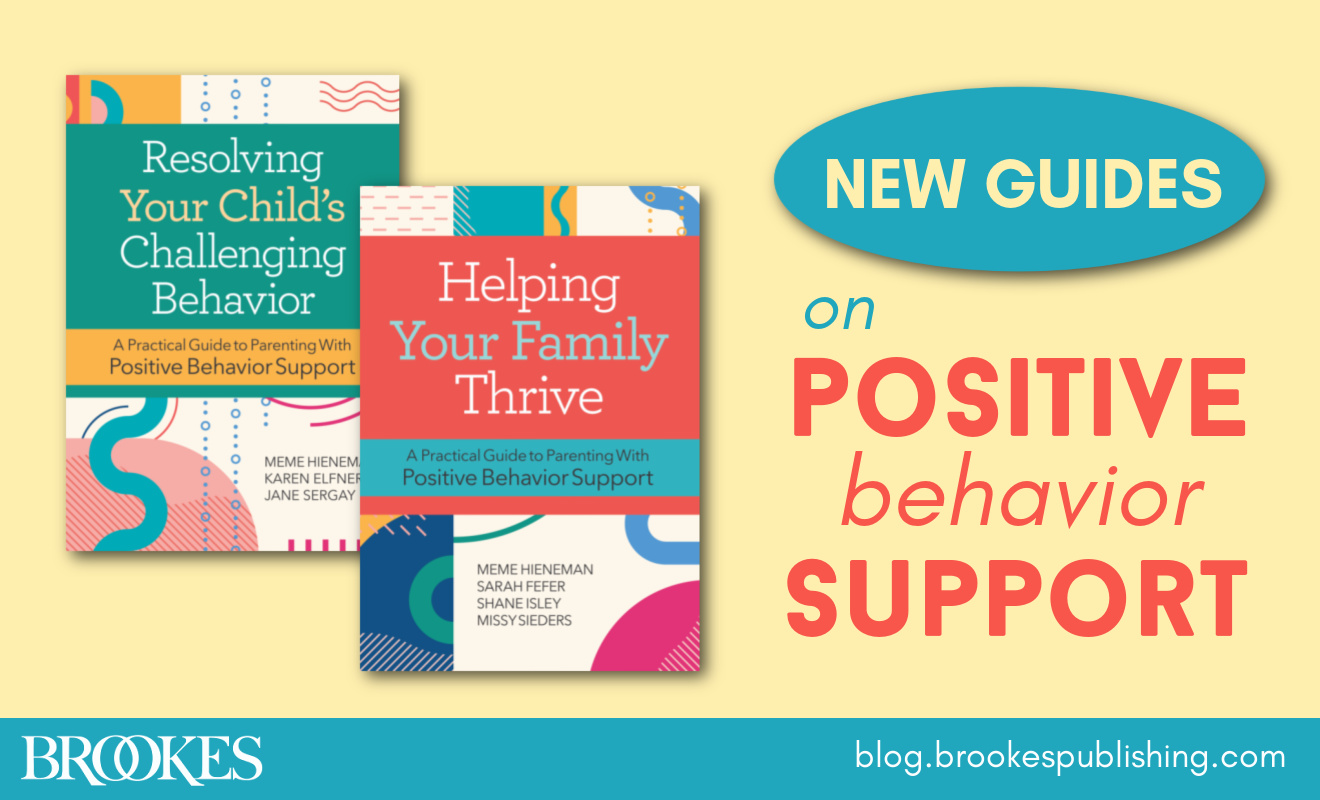
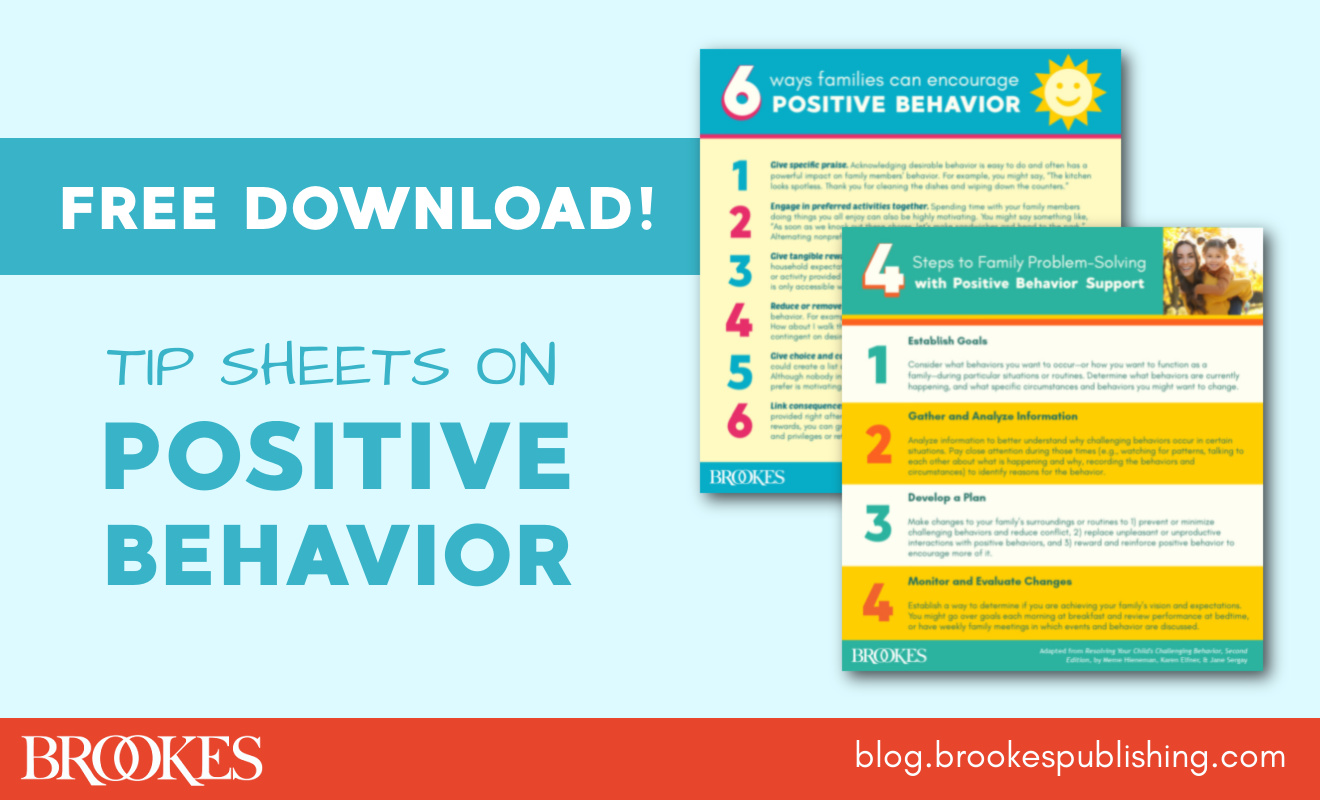
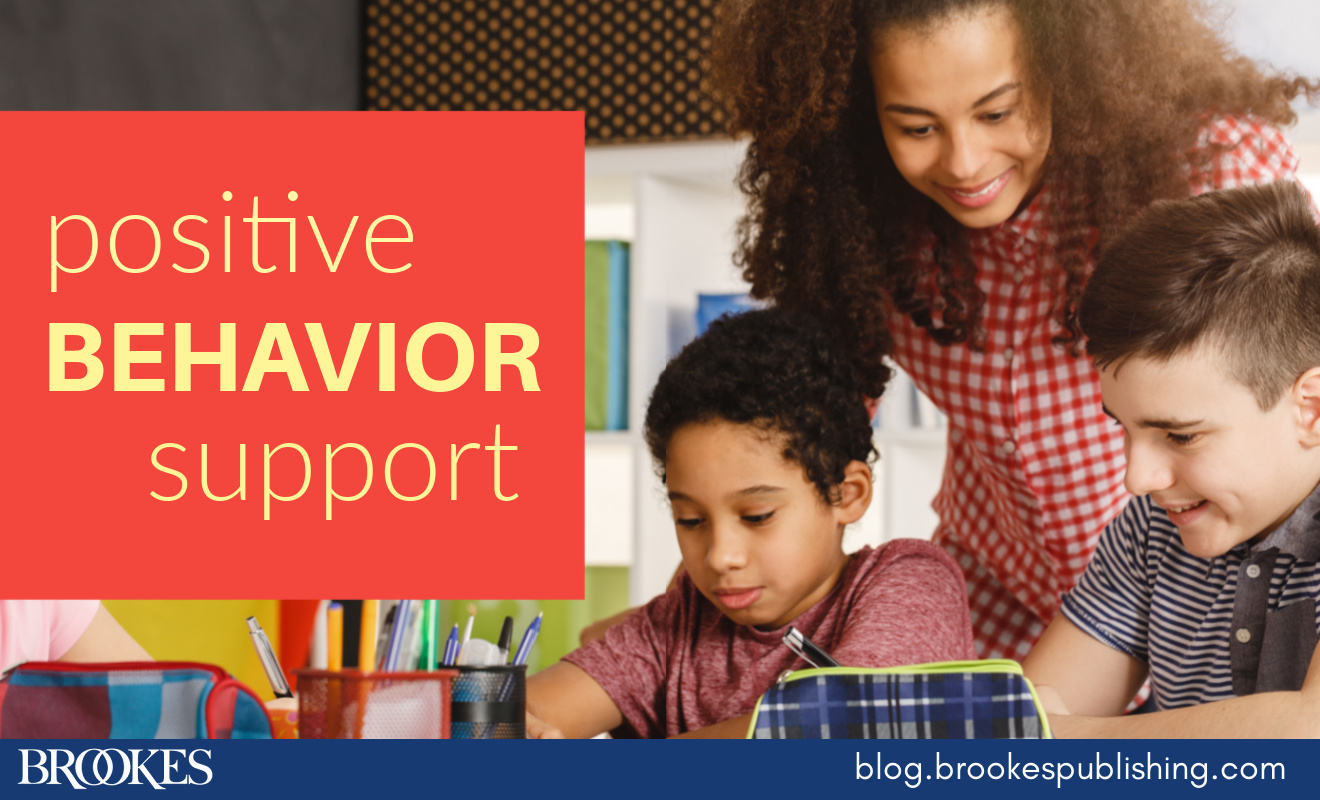
Write a Comment
Your email address will not be published. Required fields are marked *
Post a Comment